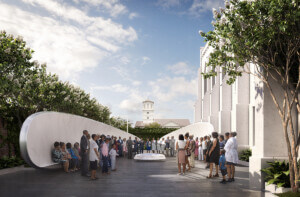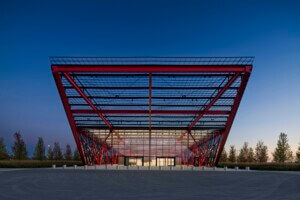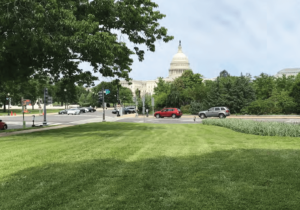The Chicago-based Pritzker Military Museum & Library has announced the four finalists in an international design competition a planned memorial honoring members of the United States Armed Forces and civilian personnel who served during the Cold War. The Cold War Veterans Memorial will be realized as a major element of the JAHN-designed Pritzker Archives & Memorial Park Center (PAMPC), the first phase of which is currently underway roughly 60 miles north of Chicago in the village of Somers, Wisconsin.
Of the four finalist designs that will advance to the second stage of the competition, only one, a memorial dubbed Orbits of Time by Los Angeles’s Oyler Wu Collaborative, is from a U.S.-based architectural practice. The other three were conceived by designers based in Italy, Japan, and Jordan.
“We were impressed by the number of inspiring design submissions that were received,” said Donald J. Stastny, a Portland, Oregon-based architect and urban designer who is serving as competition manager. “It wasn’t an easy decision, but we are very confident in the four finalists chosen to move forward. Their conceptual designs best embraced the mission and vision of the Memorial, and we can see them serve as an attraction for visitors.”
As detailed by the Pritzker Military Museum and Library, the four shortlisted design concepts “achieved the highest scores against strict criteria, including individuality, relevance, and conceptualization.” During the second stage of the competition, the finalists will further flesh out their concepts and participate in a virtual competition briefing, Q&A, mid-course review, and design exhibit. During this stage, the Competition Leadership Group will perform reviews of each design and present an advisory report of its findings to the competition jury, which will then “analyze each design and determine whether the integrity of the design concept embodied in the Stage I entry has been maintained in the Stage II design submittal and how it addresses the mission, vision, and design goals for the Memorial.”
The jury includes, among others, Moshe Safdie, landscape architect Thomas R. Olsund of Minneapolis- and Chicago-based O2 Design, and Harvey and Gina Pratt, founders of the Pratt Studio. (Based in Oklahoma, Harvey Pratt, a self-taught Native American artist, retired forensic artist, and veteran, is the designer of the National Native American Veterans Memorial at the National Museum of the American Indian in Washington D.C.)
The winning design will be announced in March of next year.
The four finalist designs for the Cold War Veterans Memorial and their respective designers are as follows:
Infinite Life | Michele De Lucchi con Francesco Forcella, project architect, with Nicholas Bewick, Junmei Liu, Emanuele Novembre, Guido Tarantola, and Mayya Sargsyan of AMDL CIRCLE | Milan
“Although this Memorial project was born out of the importance of respecting and honoring those that served during the Cold War period, we also see its relevance as a heroic symbol towards our continually evolving universe and the existence of human life. For this reason, we have chosen not only the metaphor of infinity, by evoking the ‘Moebius Loop or Orbit’ in our design concept, but also to create an experience and place from which to think about our complex global interrelationships, in the hope that they can find a harmony that links every single person and preserves the physical environment in which we all live.”
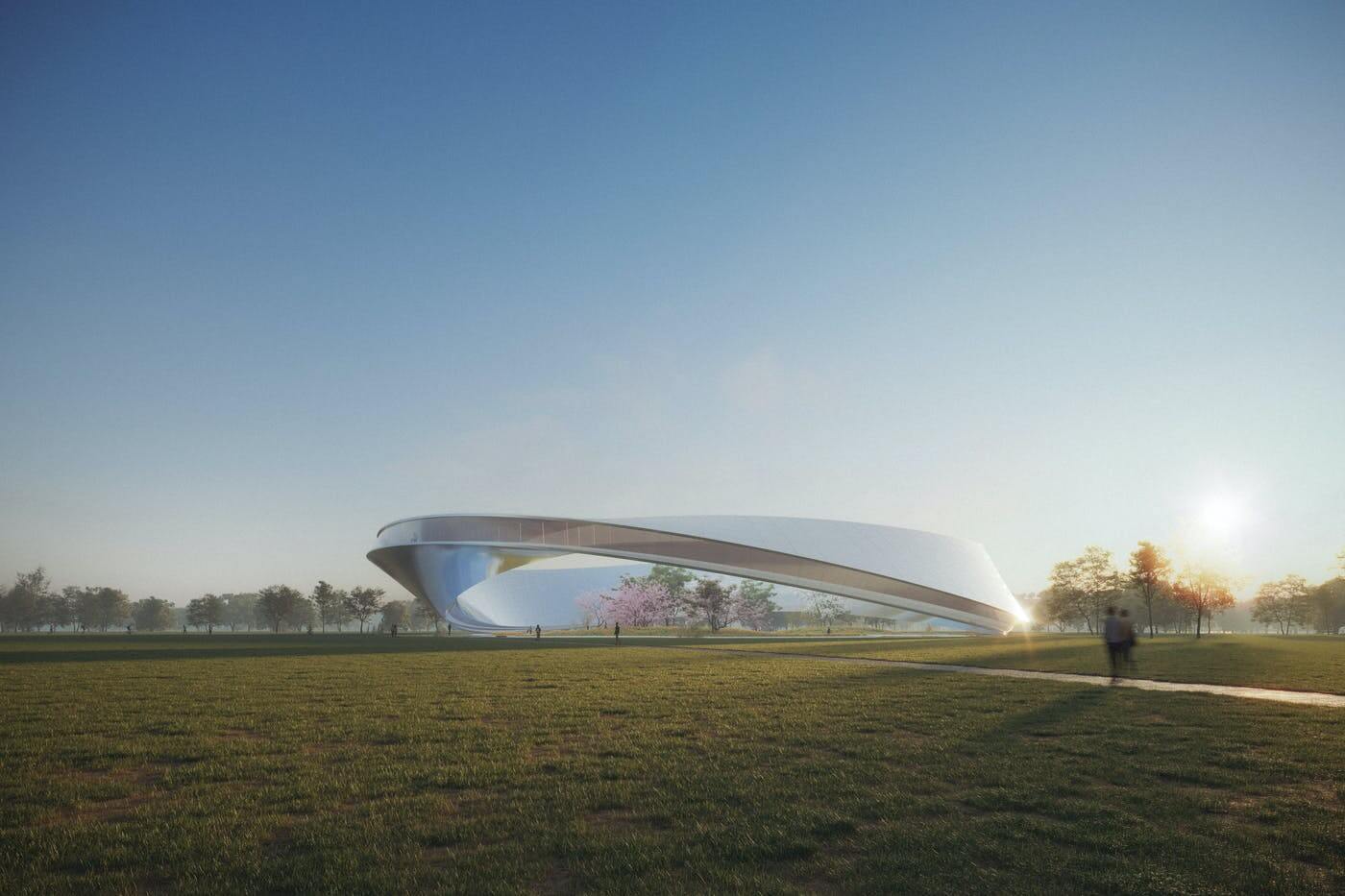
The Conflict | Mai Abu-Shanab and Jalal Al-Sadi of m+j architect studio atelier | Amman
“This Cold War memorial is intended to honor individuals and groups and give a permanent recognition to accomplishments, as quietly made, by countless individuals and groups as they pursued the expansion of freedom and democracy, creating a place for reflection and remembrance, inspiring the public to perceive freedom for centuries to come.”
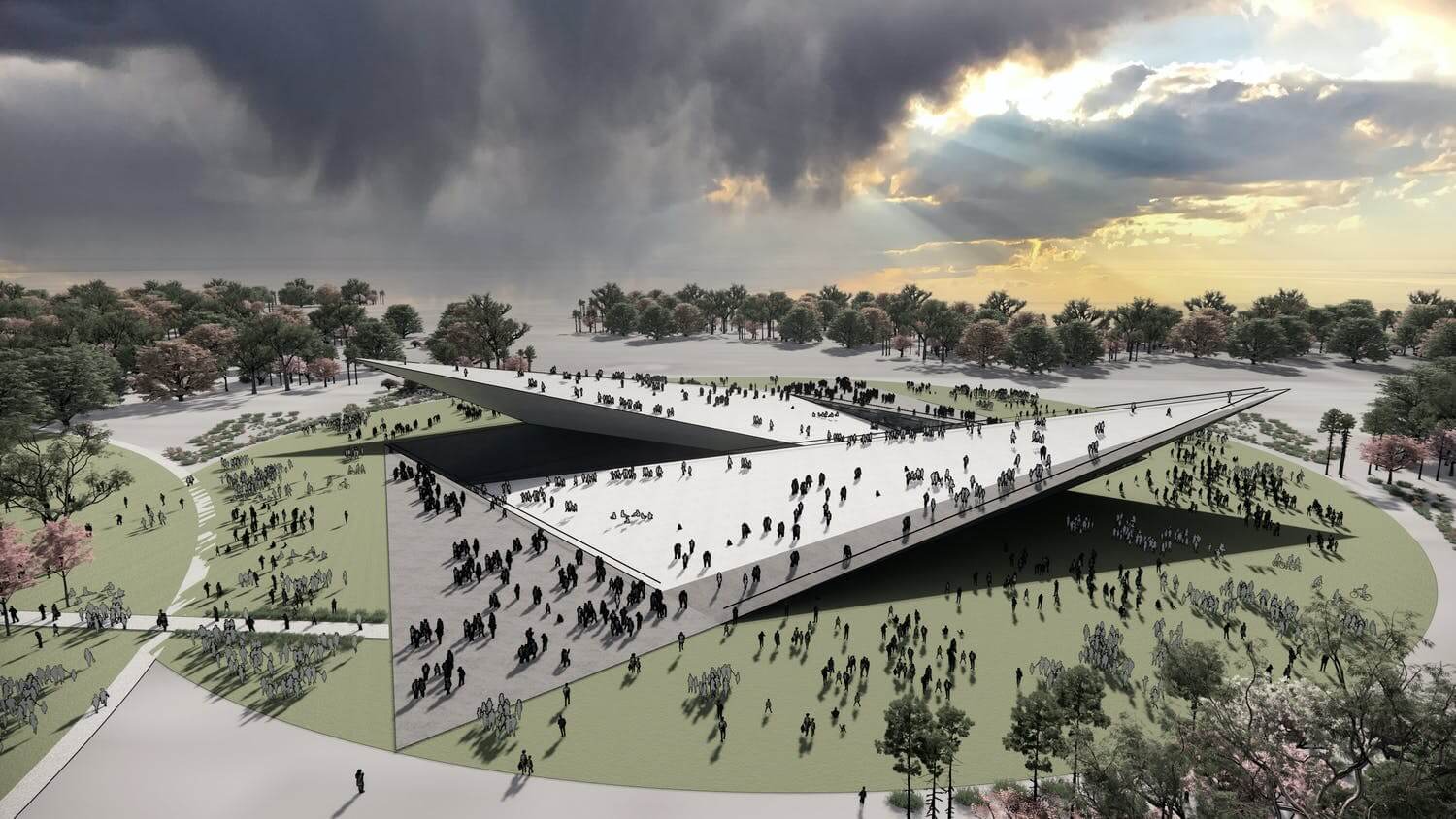
Orbits of Time | Jenny Wu and Dwayne Oyler of Oyler Wu Collaborative | Los Angeles,
“The proposed design envisions a memorial that embodies the ideals and mission of Memorial Park, making more tactile a context that can’t be measured in a single name or event: only in glimpses of history. Within these glimpses is layered a timeline of both personal and collective experiences emblematic of the Cold War – a paradigm that rebalances the interconnected narratives of American innovation and service
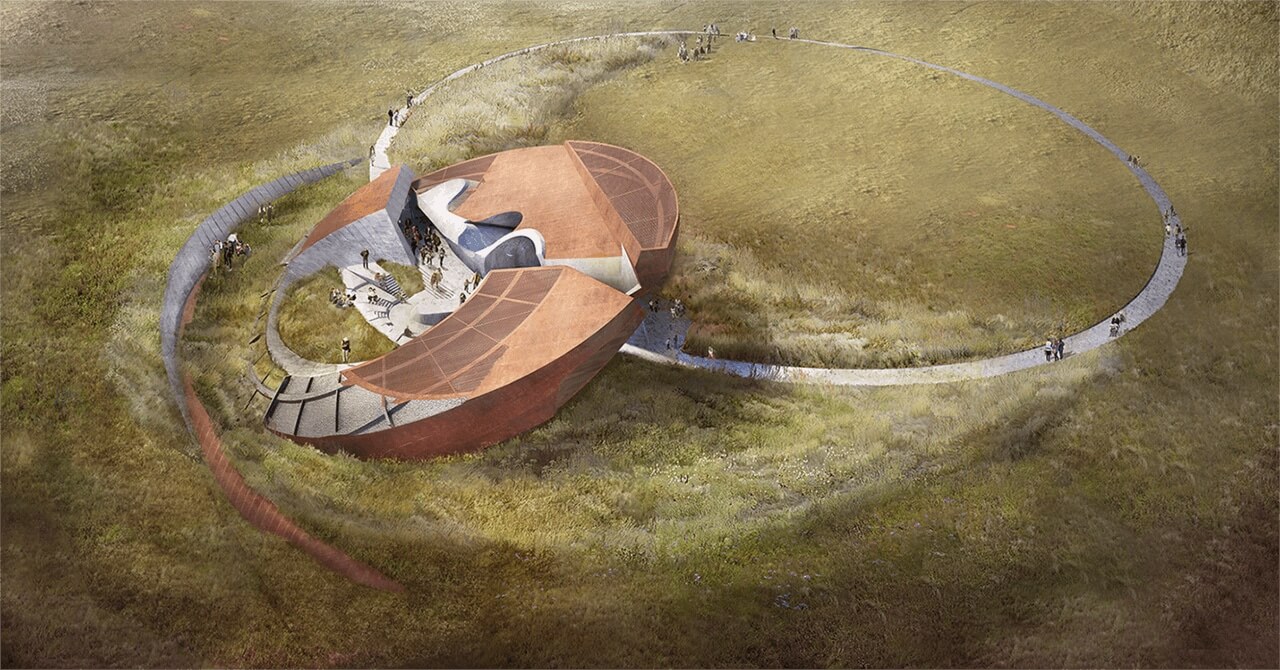
ETERNAL CIRCULATION | Shinsaku Munemoto of Shinsaku Munemoto & Associates, Architects | Kyoto
“This memorial intends to preserve the memories, records, and achievements of the veterans in perpetuity. By uncovering the layer of land, one space separates into two. The space of the ‘past underneath meets the layers of the veterans’ work and time, where one can relive the veterans’ history and memories of the Cold War. The satellite dish formed above forges the ‘present’ space to transmit the histories and memories. Through the hole opened in the unfolded land, the archive is seen, bridging the ‘past’ records to the ‘present,’ creating an ETERNAL CIRCULATION of education and communication.”

The larger PAMPC project is a multiphase, 10-year effort that commenced with the construction of the Pritzker Military Archives Center, which will house the collections—books, artifacts, and other historical materials—of the Pritzker Military Museum & Library while “providing workspace for the continued curation for future exhibits.”A nearly 10,000-square-foot gallery will also be part of the complex. Other major elements of the 288-acre PAMPC campus include a state-of-the-art commercial archives facility available to private collectors, businesses, museums, libraries, and similar institutions; a center specializing in firearms education and training, and a large swath of community green space set to include 7,440 linear feet of publicly accessible walking and cycling paths.
Established in 2003, the Pritzker Military Museum & Library describes itself as a non-partisan, non-governmental organization that aims to “increase the public’s understanding of military history, military affairs, and national security by providing a forum for the study and exploration of our military—past, present, and future—with a specific focus on their stories, sacrifices, and values.”








